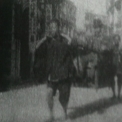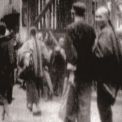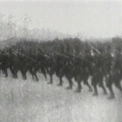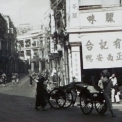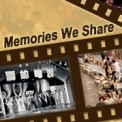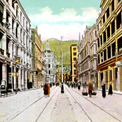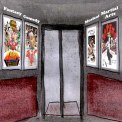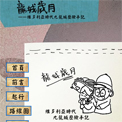-
History & Society
- Education in Pre-war Hong Kong
- History of Taikoo Sugar Refinery
- Hong Kong Products Exhibition
- Local Festivals Around the Year
- Post-war Industries
- Pre-war Industry
- The Hong Kong Jockey Club Archives
- Tin Hau Festival
- Memories We Share: Hong Kong in the 1960s and 1970s
- History in Miniature: The 150th Anniversary of Stamp Issuance in Hong Kong
- A Partnership with the People: KAAA and Post-war Agricultural Hong Kong
- The Oral Legacies (I) - Intangible Cultural Heritage of Hong Kong
- Hong Kong Currency
- Hong Kong, Benevolent City: Tung Wah and the Growth of Chinese Communities
- The Oral Legacies Series II: the Representative List of the Intangible Cultural Heritage of Hong Kong
- Braving the Storm: Hong Kong under Japanese Occupation
- A Century of Fashion: Hong Kong Cheongsam Story
Geography & EnvironmentArt & Culture- Calendar Posters of Kwan Wai-nung
- Festival of Hong Kong
- Ho Sau: Poetic Photography of Daily Life
- Hong Kong Cemetery
- Sketches by Kong Kai-ming
- The Culture of Bamboo Scaffolding
- The Legend of Silk and Wood: A Hong Kong Qin Story
- Journeys of Leung Ping Kwan
- From Soya Bean Milk To Pu'er Tea
- Applauding Hong Kong Pop Legend: Roman Tam
- 他 FASHION 傳奇 EDDIE LAU 她 IMAGE 百變 劉培基
- A Eulogy of Hong Kong Landscape in Painting: The Art of Huang Bore
- Imprint of the Heart: Artistic Journey of Huang Xinbo
- Porcelain and Painting
- A Voice for the Ages, a Master of his Art – A Tribute to Lam Kar Sing
- Memories of Renowned Lyricist: Richard Lam Chun Keung's Manuscripts
- Seal Carving in Lingnan
- Literary Giant - Jin Yong and Louis Cha
Communication & Media- Hong Kong Historical Postcards
- Shaw Brothers’ Movies
- Transcending Space and Time – Early Cinematic Experience of Hong Kong
- Remembrance of the Avant-Garde: Archival Camera Collection
- Down Memory Lane: Movie Theatres of the Olden Days
- 90 Years of Public Service Broadcasting in Hong Kong
- Multifarious Arrays of Weaponry in Hong Kong Cinema
-
History & SocietyGeography & EnvironmentArt & Culture
-
View Oral History RecordsFeatured StoriesAbout Hong Kong Voices
-
Hong Kong MemoryTranscending Space and Time – Early Cinematic Experience of Hong KongRecently Visited
The Cityscape of Early Hong Kong
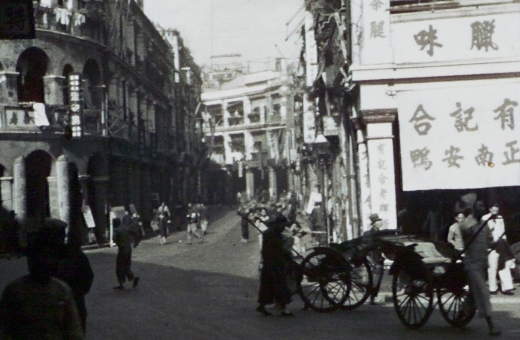
The cinematic experience first began when the Lumière brothers from France filmed a collection of footage documenting real life, such as Workers Leaving the Lumière Factory and Arrival of a Train at a Station, in 1895. The siblings then sent its staff all over the world to make visual recordings with this innovative technology, as well as to attract audiences through showcasing the novel moving images they produced.
The First Moving Images of Hong Kong
Records indicate that the earliest moving images of Hong Kong were shot in 1898 by the Edison Company. The six shorts, namely Government House at Hong Kong, Sikh Artillery, Hong Kong, Street Scene in Hong Kong, Hong Kong, Wharf Scene and Hong Kong Regiment 1 & 2, came to four minutes. Although the camerawork in these travelogues was basic and the images somewhat blurred, it is not difficult for one to catch glimpses of the landscape in 19th Century Hong Kong when watching them.
The footage captured includes soldiers operating a canon or undergoing military drills, trading houses in Sheung Wan, warehouses in Whampoa Kowloon. Pedestrians, rickshaws and coolies are occasionally seen.
Cityscape through the Eyes of Foreigners
Since the Boxer Rebellion in 1900, more and more film companies from the West began sending cinematographers to China to make travelogues, documentaries, as well as films which reconstruct historical events. Hong Kong became a filming hotspot among Westerners after the Opium Wars. Pioneer travelogue maker, Burton Holmes, is one of many video-graphers. He came to Hong Kong in 1901, 1906 and 1913, capturing porters, rickshaw pullers, architectures and streetscapes on film. Enrico Lauro, who once settled in Shanghai and recorded footage of the Empress Dowager Cixi and the Guangxu Emperor’s funeral, also documented the festivities which took place in Hong Kong during King George V’s coronation in 1911.
Most of the documentaries made by foreigners in Hong Kong are of the city as seen through their eyes. Nonetheless, they serve as valuable references. For example, Hong Kong Sceneries (1930s), is believed to be shot by a Westerner. With a total running time of 40 minutes, it provides a detailed illustration of Hong Kong’s topography and urban landscape, including a full view of Victoria Harbour.
Photos
Copyright © 2012 Hong Kong Memory. All rights reserved.






